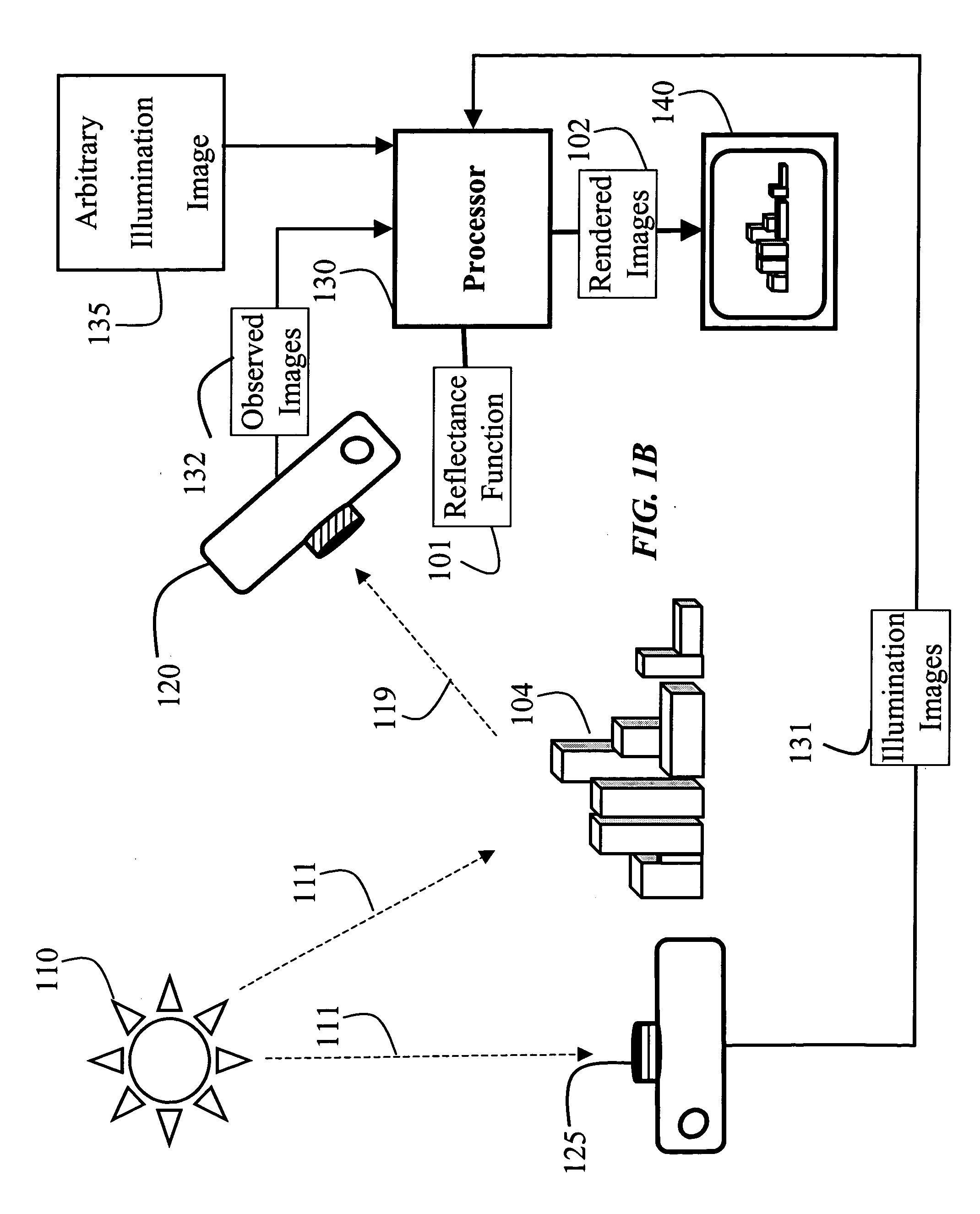Scene reflectance functions under natural illumination
a natural illumination and reflectance function technology, applied in the field of acquiring and rendering images, can solve the problems of large size of the system that uses controlled incident illumination, large cost, and fixed in the studio, and achieve the effect of efficient estimation of reflectance functions
- Summary
- Abstract
- Description
- Claims
- Application Information
AI Technical Summary
Benefits of technology
Problems solved by technology
Method used
Image
Examples
Embodiment Construction
[0035] System Structure
[0036] As shown in FIG. 1, our system 100 for estimating a reflectance function 101 and using the estimated reflectance function to render new images 102 of a scene using arbitrary illumination 135.
[0037] The reflectance function 101 according to the invention is in the form of a reflectance image 105 including a plurality of pixels 106. Each pixel is associated with a set 300 of multiple weighted kernels 301, described in greater detail below.
[0038] The system 100 includes a source 110, e.g., a monitor or artificial or natural light 111 in a surrounding scene, see FIG. 1B, a sensor 120, a processor 130, and an output device 140 for the rendered image 102, all connected by a network. For ‘still-life’ scenes, the scene can include an object 103. The sensor can be a camera. The sensor acquires observed images 132 of the scene subject to the illumination 111.
[0039] The monitor 110 generates high-resolution incident illumination 111 according to illumination i...
PUM
 Login to View More
Login to View More Abstract
Description
Claims
Application Information
 Login to View More
Login to View More - R&D
- Intellectual Property
- Life Sciences
- Materials
- Tech Scout
- Unparalleled Data Quality
- Higher Quality Content
- 60% Fewer Hallucinations
Browse by: Latest US Patents, China's latest patents, Technical Efficacy Thesaurus, Application Domain, Technology Topic, Popular Technical Reports.
© 2025 PatSnap. All rights reserved.Legal|Privacy policy|Modern Slavery Act Transparency Statement|Sitemap|About US| Contact US: help@patsnap.com



